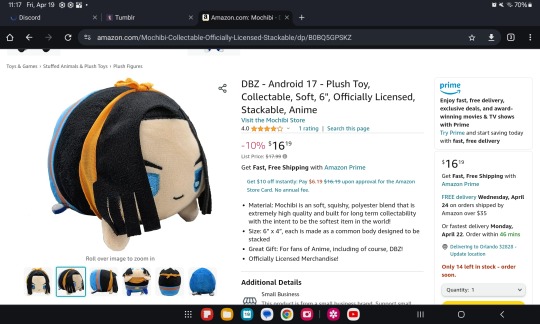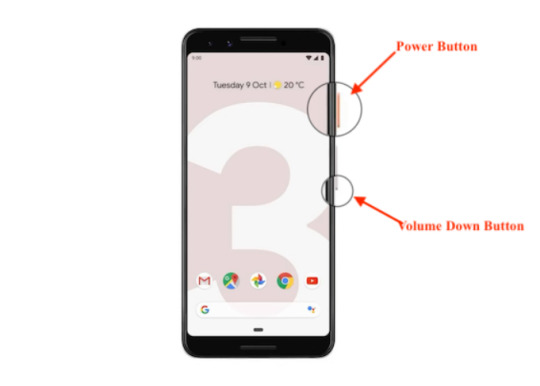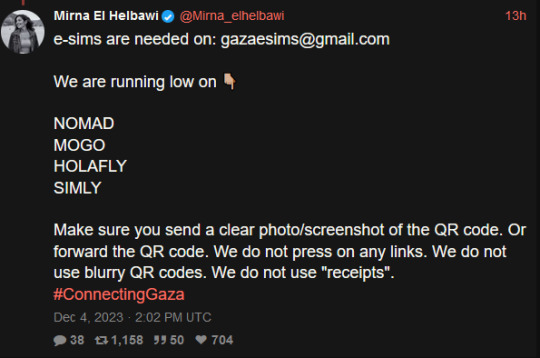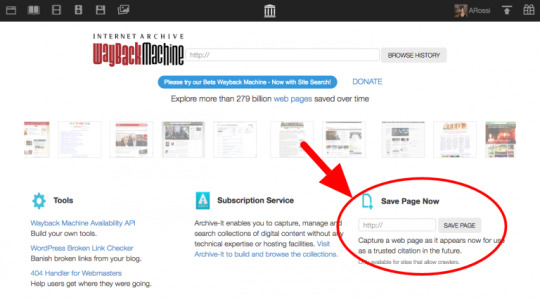#how to screenshot on android
Text
Next-Level Security: Android Phones with Enhanced Privacy Features
Android 10
In today's digital age, privacy and data security have become paramount concerns for smartphone users. Android, one of the most widely used mobile operating systems, has made significant strides in providing enhanced privacy features to protect users' personal information. In this article, we will explore the world of Android phones with next-level security and highlight the privacy features that set them apart.
- Biometric Authentication:
Leading Android phones offer advanced biometric authentication methods, such as fingerprint sensors and facial recognition. These features provide an extra layer of security, ensuring that only authorized users can access the device and its data.
- Secure Folder and App Lock:
Android phones equipped with enhanced privacy features often include a secure folder or app lock functionality. This allows users to lock specific apps or store sensitive files in a separate, password-protected folder, safeguarding them from unauthorized access.
- Privacy Settings and Permissions Control:
Android offers robust privacy settings that enable users to control app permissions and restrict access to sensitive data. Users can customize which apps have access to their location, contacts, camera, and other personal information, providing them with greater control over their privacy.
- Private Browsing and Incognito Mode:
Many Android phones feature private browsing modes in their default web browsers. These modes prevent the browser from storing browsing history, cookies, and other data, ensuring a more private and secure online experience.
- Encrypted Communication:
Android phones with enhanced privacy features often support encrypted communication protocols, such as HTTPS and VPN (Virtual Private Network) connections. These protocols encrypt data transmission, making it more challenging for hackers or unauthorized entities to intercept and access sensitive information.
- App Verification and Play Protect:
Android's Play Protect feature scans apps for potential security risks before installation and regularly monitors installed apps for any malicious activity. This proactive approach helps users avoid potentially harmful apps and ensures a safer app ecosystem.
- Automatic Security Updates:
To combat security vulnerabilities, Android phones receive regular security updates. These updates patch any known security issues and protect users from emerging threats, providing ongoing protection for their devices and data.
- Two-Factor Authentication:
Android phones support various two-factor authentication methods, such as SMS codes, biometric verification, or security keys. Enabling two-factor authentication adds an extra layer of security to user accounts and prevents unauthorized access, even if the device itself is compromised.
- Guest Mode and Multiple User Profiles:
Android phones offer guest mode and multiple user profiles, allowing users to create separate user accounts with different levels of access. This feature is particularly useful when sharing the device with others or when additional privacy is required.
- Secure Boot and Device Encryption:
Leading Android phones employ secure boot technology, ensuring that the device boots only with trusted and verified software. Additionally, device encryption protects data stored on the device, making it unreadable without the correct decryption key.
By opting for Android phones with enhanced privacy features, users can have greater confidence in the security and privacy of their personal information. These advanced features, such as biometric authentication, app permissions control, encrypted communication, and regular security updates, provide a next-level security experience that prioritizes user privacy and data protection.
As privacy concerns continue to grow, Android's commitment to enhancing privacy features helps users take control of their digital lives and protect their sensitive information. Whether it's securing personal files, controlling app permissions, or ensuring safe online browsing, Android phones with enhanced privacy features empower users to embrace the digital world with peace of mind.
#how to screenshot on android#Free Ringtones For Android#Android emojis#Android Emulator#Android watch#Find My Android#ANDROID 10#ANDROID#Android 1#ANDROID TABLET
1 note
·
View note
Text
Android Security: Protecting Your Device from Malware and Cyber Threats
Android smartwatch
As Android devices become an integral part of our daily lives, ensuring their security has become increasingly important. With the rise of mobile malware and cyber threats, it is essential to take proactive measures to protect your Android device and safeguard your personal information. In this article, we will explore the best practices and strategies for enhancing Android security, enabling you to stay safe in the digital world.
Keep Your Device Updated:
Regularly updating your Android device is crucial for maintaining its security. Operating system updates often include important security patches that address vulnerabilities and protect against emerging threats. Enable automatic updates to ensure you receive the latest security enhancements promptly.
Install Apps from Trusted Sources:
Stick to official app stores, such as the Google Play Store, to download and install apps. These platforms have security measures in place to detect and remove malicious apps. Be cautious when sideloading apps from third-party sources, as they may carry hidden malware or compromise your device's security.
Read App Permissions:
Before installing an app, carefully review the permissions it requests. Be skeptical if an app asks for excessive permissions that seem unrelated to its functionality. If an app requests access to sensitive data or features, consider whether it is necessary and trustworthy.
Use Antivirus Software:
Install a reputable antivirus app from a trusted provider to scan for and remove malware on your Android device. Regularly update the antivirus software to ensure it has the latest virus definitions and protection capabilities.
Secure Your Lock Screen:
Set up a strong lock screen pattern, PIN, or biometric authentication (fingerprint or face recognition) to prevent unauthorized access to your device. Additionally, enable the lock screen timeout feature to automatically lock your device after a period of inactivity.
Enable App Verification:
Activate "Verify Apps" or a similar feature in your device settings. This feature scans apps for potential threats during installation and alerts you if any risks are detected. Keep this feature enabled for continuous protection.
Be Wary of Phishing Attempts:
Exercise caution when clicking on links in emails, messages, or websites. Cybercriminals may attempt to trick you into revealing sensitive information through phishing scams. Verify the legitimacy of the source before sharing any personal details.
Avoid Public Wi-Fi:
Public Wi-Fi networks can be insecure and make your device vulnerable to attacks. Whenever possible, use a virtual private network (VPN) to encrypt your internet connection and protect your data when connected to public Wi-Fi.
Secure Your Online Accounts:
Enable two-factor authentication (2FA) for your online accounts whenever available. This adds an extra layer of security by requiring a verification code or biometric authentication in addition to your password.
Regularly Backup Your Data:
Perform regular backups of your Android device to protect your important data. This ensures you can recover your information in case of device loss, theft, or ransomware attacks.
Protecting your Android device from malware and cyber threats is essential in today's digital landscape. By following these best practices, including keeping your device updated, using trusted app sources, reading app permissions, using antivirus software, securing your lock screen, and being cautious of phishing attempts, you can significantly enhance your Android security. Additionally, employing strategies like avoiding public Wi-Fi, enabling app verification, securing online accounts, and regularly backing up your data will further safeguard your device and personal information. Take the necessary steps to protect your Android device and enjoy a secure and worry-free mobile experience.
#how to screenshot on android#SCREENSHOT ANDROID#Android Auto#Snes roms for android#android phone#android 1#Android 12#Android 17#How to screen record on android#Android
1 note
·
View note
Text
Android Screenshot Privacy: Protecting Sensitive Information
Android smartphones offer a convenient way to capture and share screenshots, allowing users to capture important information, memorable moments, or share content with others. However, it is essential to be mindful of the potential privacy risks associated with screenshots, particularly when they contain sensitive or personal information. In this article, we will explore the importance of protecting sensitive information in Android screenshots and discuss strategies to safeguard your privacy.
Understanding the Risks
Screenshots can inadvertently capture sensitive information such as personal messages, financial transactions, confidential documents, or private photos. When shared or stored without proper precautions, these screenshots can fall into the wrong hands, compromising privacy and potentially leading to identity theft, fraud, or other security breaches. It is crucial to be aware of the risks involved and take necessary steps to protect sensitive information.
Be Mindful of Content
Before taking a screenshot, it is essential to be mindful of the content on your screen. Avoid capturing sensitive information, such as login credentials, financial details, personal messages, or intimate photos. Double-check the content to ensure it does not include any private or confidential data. Being proactive in filtering what appears in your screenshots can significantly reduce the risk of privacy breaches.
Use Secure Apps and Platforms
Ensure that you are using secure apps and platforms to handle sensitive information. Look for applications that offer end-to-end encryption for messaging or file-sharing purposes. These apps protect your data both during transmission and when stored on your device, reducing the risk of unauthorized access. Choose reputable apps and platforms that prioritize user privacy and security.
Be Mindful of Sharing
Think twice before sharing screenshots that contain sensitive information. Consider the potential consequences and whether it is necessary to share the screenshot with others. Avoid sharing sensitive content through unsecured channels or platforms where you have limited control over who can access the screenshot. When in doubt, err on the side of caution and refrain from sharing potentially compromising information.
Secure Your Device
Protecting your device with strong passwords, PINs, or biometric authentication adds an extra layer of security. This helps prevent unauthorized access in case your device falls into the wrong hands. Additionally, ensure your device is up to date with the latest security patches and software updates. Regularly updating your device's operating system helps mitigate vulnerabilities and enhances overall security.
Use Privacy Mode or Screen Locking
Some Android devices offer privacy mode or screen locking features that allow you to hide specific apps or content. This can be useful when you need to temporarily protect sensitive information on your screen. Utilize these features to prevent unauthorized individuals from accessing or capturing sensitive data through screenshots.
Edit and Crop Screenshots
Before sharing a screenshot, consider editing or cropping it to remove any sensitive information. There are various image editing apps available on the Google Play Store that enable you to blur or cover specific areas of the screenshot. This step ensures that even if the screenshot is inadvertently shared or accessed, the sensitive information remains obscured.
Secure Cloud Storage
If you choose to store your screenshots in the cloud, make sure you are using a reputable and secure cloud storage provider. Enable two-factor authentication for your cloud storage account and regularly review and manage access permissions to your stored screenshots. By taking these precautions, you can enhance the security and privacy of your stored screenshots.
Protecting sensitive information in Android screenshots is crucial to safeguard your privacy. By being mindful of the content you capture, using secure apps and platforms, being cautious with sharing, securing your device, utilizing privacy features, editing screenshots, and ensuring secure cloud storage, you can minimize the risk of privacy breaches. By taking these proactive steps, you can enjoy the convenience of capturing and sharing screenshots while maintaining the security and privacy of your sensitive information.
ANDROID TECH
#Android tech#android#Tech.net#Screenshot Android#free ringtones for android#How To Screenshot On Android#android phones#android emojis
1 note
·
View note
Text
<strong>Android</strong>
New Post has been published on https://bankakredin.com/android/
Android

Android
Android is a Linux-based operating system developed for mobile devices such as mobile phones and tablets. Developed by Google and the Open Handset Alliance and first published in 2008, with the advancement and development of Android technology, it has started to be used in watches, televisions, glasses and even cars today.
As the number of mobile devices and users in the world increases, Android has become the most popular operating system in the world. In the statements made as of 2021, Sameer Samat, who assumed the position of Google Product Management Vice President, announced that the number of active smart devices using the Android operating system worldwide has exceeded 3 billion.
Android is an open source operating system based on Linux and is free to use. By offering Android free and open source to users, Google aimed to develop the operating system faster, to enable technology companies to use the price advantage and to use the Android operating system on more devices.
This move made by Google has given the desired result and a very large software developer community has emerged with users from 190 different countries in order to improve the functions and capabilities of the devices by using the advantage of being open source code. Applications for mobile devices using the Android operating system Google PlayIt is published in the application market called Store.
The application extension supported on the Android operating system is “.apk”. According to the latest statements, in the second quarter of 2020, Android users can access more than 2.7 million applications through the Google Play Store. These applications reached 28.3 billion downloads in the same period.
Sections That Make Up Android
There are 5 basic parts that make up the Android operating system developed based on Linux. These sections are;
Kernel: Android is based on Linux. That’s why the Android kernel is also a Linux kernel. The kernel includes security, process and memory management, network stacks, and driver models.
Android RunTime : It is the virtual machine for the Android operating system.
Library: It is the section that contains the web browser, database, graphics and interface libraries.
Application Framework: It is the section with a wide platform for application developers.
Application Layer: It is the part that contains applications developed with Java program.
history
When we examine the history of the Android operating system, it is possible to reach some interesting information. At the beginning of these is that the first development purpose of android was digital cameras instead of phones.
Andy Rubin, one of the founders of Android, during his speech at a forum in Tokyo, explains that they actually developed the operating system they use for mobile phones for cameras, but that cameras do not have a large enough market and they entered the mobile device market by keeping up with the developing technology.
Android Versions and Names
VersionCode nameRelease date1.0Android 1.0September 23, 20081.1Android 1.1February 9, 20092.3gingerbreadFebruary 9, 20112.3.6gingerbreadSeptember 2, 20113.0HoneycombFebruary 22, 20114.0Ice Cream Sandwich19 October 20114.1Jelly Bean9 July 20124.2Jelly Bean13 November 20124.3Jelly BeanJuly 24, 20134.4Kitkat31 October 20134.4.4Kitkat19 June 20145.0lollipopNovember 3, 20145.1lollipopMarch 9, 20156.0marshmallowsOctober 5, 20157.0nougatAugust 22, 20167.1nougatOctober 4, 20167.1.1nougatDecember 5, 20168.0OreoAugust 21, 20178.1OreoDecember 5, 20179pie6 August 20181010September 3, 201911th11th8 September 2020
Table 1: Android OS Versions and Release Dates
Android for developers
With today’s technology, the number of mobile devices is increasing day by day. In this sense, many software developers develop applications for devices with Android operating system in order to meet the needs of users and make their lives easier.��The most used software by software developers is Android Studio. Apart from this, it is possible to develop Android applications with various software such as Xamarin, Cordova, Titanium, Eclipse and IntelliJ.
The developer options available in the Android operating system are turned off by default. You have to enter the phone’s settings menu and press the version number in the about phone field in the system option settings repeatedly until the “You are now a developer” notification appears. After this notification, developer settings for mobile application developers will be located in the settings menu.
how to screenshot on android,
how to clear cache on android,
how to take a screenshot on android,
how to screen record on android,
how to transfer contacts from android to iphone,
can airpods connect to android,
do airpods work with android,
how to connect airpods to android,
how to transfer data from android to iphone,
how to scan a qr code on android,
android 13,
android,
androidimi bul,
android oto,
android 18,
android 21,
android 12,
android stüdyosu,
#android#android 12#android 13#android 18#android 21#android oto#android stüdyosu#androidimi bul#can airpods connect to android#do airpods work with android#how to clear cache on android#how to connect airpods to android#how to scan a qr code on android#how to screen record on android#how to screenshot on android#how to take a screenshot on android#how to transfer contacts from android to iphone#how to transfer data from android to iphone
0 notes
Text
HA HA. You waited for super long and you got left on a cliffhanger!!! Stanley Parable Day Comic 7/9









Part 8
#the stanley parable#the stanley parable art#the stanley parable fanart#tsp art#tsp fanart#tsp fandom#the stanley parable ultra deluxe#tspud#android’s insides#do we like the “read more’’ bit for longer posts? of course the huge ones need it but do we like them in smaller ones like this?#rendering this now even I realise how different it all is. for starters I’m am now stealing big colours from screenshots!#the stanley parable comic#stanley tsp#Stanley parable day#Stanley parable day comic
541 notes
·
View notes
Text

possibly getting him
#dbz#dragon ball#dragon ball z#android 17#mochibi#Dbz mochibi#kylo rambles#love how I took the screenshot at 11:17 pm and it's about Android 17
22 notes
·
View notes
Text
And i was thinking "oh, but i don't know how i'd doctor screenshots and especially recordings. :(" but then i remembered i could just go "is anyone else's enstars app not allowing them take screenshots and recordings anymore?" and be done with that
#yknow how when you're in incognito you can't take screenshots and certain apps don't allow it either#like bts world on android doesn't allow it for privacy reasons so the app says
10 notes
·
View notes
Text
HI GUYS DID YOU KNOW LOVE NIKKI WAS LITERALLY MY CHILDHOOD and the sea ver getting shut down years ago made me the saddest. for the longest time i still had it installed on my phone even if it wouldn't work anymore. but now bcs i finally know how to yk, get games on the na app store, i can finally FUCKING GET MY CHILDHOOD GAME AND PLAY IT AGAIN AFTER SO MANY YEARS
#⋯ ꒰ა starry thoughts ໒꒱ *·˚#I AM SO INCREDIBLY HAPPY I AM THE HAPPIEST EVER#i MISSED THIS GAME SO MUCH !!!!!#tbh for thr longest time i kinda forgot abt it until a moot had it on their carrd but i was chill abt it#but i saw it on twt again and theres a. theres an rpg of it going to exist what ???#yeah tho love nikki story iirc. fitting. yeah. AGHHHHHHRJHEJFBSKDNSOSJ#THIS GAME. WAS. MY CHILDHOOD. okay.#sorry i'm really excited this game was like the game i was most in as a kid (i think)#i still rmbr when it shut down and i realized that and ohhh that memories come rushing back#IT'S SO SAD I DOUBT I'LL GET MY ACCT BACK IT'S BEEN SO LONG#idk if i have any old screenshots god i really hope i do. i really hope.#:(( man. memories coming back#tbh idk if i'll even be able to get it bcs there's Something (idk how to explain)#but i hope so wah ..........#LOOK BTW IVE KNOWN HWO TO GET APPS FROM. NA/JP FOR A WHILE NOW#alsoooooooooooo tbh for the longest time i did but i was scared of qooapp lol#BUT OKAY yeah iphone now and all etc etc etc also did qooapp like the last few months of being an android user#SO YEAH. i didnt think abt getting love nikki again until now#ahhhh idk what problems this game has but idc this was my fucking CHILDHOOD :((
7 notes
·
View notes
Text
im at a place in my life where i just tried to suck the water out of my broken phone screen
#you can pry this half-fucntional iphone 8 out of my cold dead hands#i still dont know how to screenshot without a home button#and i dont want android because me and all my friends share our locations and we track each other all the time#and um i love that
4 notes
·
View notes
Text

Capturing Your Screen: A Guide to Taking Screenshots
The article provides a comprehensive guide on taking screenshots across multiple devices, alongside recommendations for relevant apps and frequently asked questions.
Table of Contents
Introduction
Taking Screenshots on a Mac
Taking Screenshots on a Mac-
Taking Screenshots on an iPhone or iPad
Taking Screenshots on an iPhone or iPad
Taking Screenshots on an Android Device
Taking Screenshots on Android Devices
Taking Screenshots on Windows
Taking Screenshots on Windows
Screenshot Apps
Screenshot Apps
Frequently Asked Questions
Read the full article here ->
Visit the Website -> ThePolymathPursuit
0 notes
Text
All the Ways to Take Screenshots on Android
Screenshots are an integral part of the smartphone experience. Whether you want to capture a memorable moment in a game or share something interesting with a friend, knowing how to take screenshots on your Android device is essential.
Continue reading Untitled

View On WordPress
#Android screenshot methods#Android screenshot shortcuts#Android screenshot techniques#Android screenshot tutorial#Capture more on Android#How to take a screenshot on Android#Power button screenshot Android#Screenshot gestures on Android#Scrolling screenshot Android#Voice command screenshot Android
0 notes
Text
Exploring the Android Ecosystem: From Smartphones to Smart Homes
Facetime For Android
The Android operating system has revolutionized the world of mobile technology, providing a versatile and user-friendly platform for smartphones and tablets. However, its influence extends far beyond handheld devices, encompassing an entire ecosystem that permeates various aspects of our lives, including the rapidly growing domain of smart homes. In this article, we will delve into the expansive Android ecosystem, exploring its evolution from smartphones to smart homes and the possibilities it brings to our interconnected world.
At its core, the Android ecosystem revolves around the Android operating system, developed by Google. Initially designed for smartphones, Android has become the most widely used mobile operating system globally, powering a vast array of devices from various manufacturers. Its open-source nature has allowed for widespread adoption, fostering a thriving ecosystem of applications, services, and hardware innovations.
The primary entry point into the Android ecosystem is through smartphones. Android-powered smartphones offer a diverse range of features, functionalities, and price points, catering to the needs and preferences of a broad user base. From budget-friendly devices to flagship models with cutting-edge technology, Android smartphones provide a versatile platform for communication, productivity, entertainment, and much more. The Google Play Store, an integral part of the Android ecosystem, hosts a vast collection of applications that enhance the capabilities and customization options of Android smartphones.
Beyond smartphones, the Android ecosystem has expanded into other domains, notably smart homes. With the rise of the Internet of Things (IoT), Android has found its way into an increasing number of connected devices, transforming ordinary homes into smart, automated environments. From smart thermostats and lighting systems to security cameras and voice assistants, Android-based devices are at the forefront of the smart home revolution.
One of the key advantages of the Android ecosystem in the realm of smart homes is its interoperability. Android's open nature and extensive developer community have led to the creation of standardized communication protocols, allowing different devices and platforms to seamlessly connect and interact with one another. This interoperability enables users to build a cohesive and integrated smart home system, where various devices can be controlled and automated through a centralized interface.
Google Assistant, the AI-powered virtual assistant developed by Google, plays a central role in the Android ecosystem's expansion into smart homes. With its integration into Android smartphones and smart speakers, Google Assistant serves as a hub for controlling and managing connected devices. Users can control lights, adjust thermostats, stream media, and perform numerous other tasks through voice commands, creating a truly connected and hands-free smart home experience.
The Android ecosystem's reach in the smart home market goes beyond voice control and automation. Android-based devices such as smart TVs, streaming media players, and home entertainment systems provide seamless integration with other Android devices, allowing users to extend their digital experiences to the living room. The ability to cast content from smartphones to TVs or synchronize media playback across devices further enhances the multimedia capabilities of the Android ecosystem within the smart home environment.
Additionally, Android's influence extends to wearable devices such as smartwatches and fitness trackers, offering users convenient access to information, health monitoring, and personalized notifications. These wearables integrate with Android smartphones, creating a cohesive ecosystem that seamlessly syncs data and delivers a unified user experience.
As the Android ecosystem continues to evolve, its impact on our daily lives grows more profound. From smartphones to smart homes, Android offers a versatile and interconnected platform that empowers users with a vast array of possibilities. Whether it's controlling devices with a simple voice command, automating routine tasks, or enjoying multimedia experiences across different devices, the Android ecosystem brings convenience, customization, and efficiency to the forefront, shaping the way we interact with technology in our homes and beyond.
The Android ecosystem has transformed the world of mobile technology and expanded its influence into the realm of smart homes. With its open-source nature, extensive application library, interoperability, and integration with Google Assistant, Android offers a seamless and interconnected experience that enhances our daily lives. As the Android ecosystem continues to evolve, we can expect further innovations that will shape the future of both smartphones and smart homes, creating a more connected and intelligent world.
#ANDROID 10#ANDROID EMULATOR#Android Screenshot#FACETIME ON ANDROID#Ringtones for android#android 1#Android Tech#Android auto#Android 12#How to take a screenshot on android
1 note
·
View note
Text

a rundown on the listed e-sim platforms from this tweet from mirna el helbawi. visit esimsforgaza to learn about this effort. (they also have a tutorial on how to purchase an esim and send it to them)
update v10 (4/9/24) nomad (regional middle east), holafly (israel and egypt), simly (palestine and middle east), and airalo (discover) are currently in the highest in demand. platforms. if it has been more than 3 weeks since you initially sent your esim and your esim has not been activated, you can reforward your original email with the expiration date in the subject line. you can see gothhabiba’s guide for how to tell if your esims have been activated. if your esim has expired without use, you can contact customer service to renew or replace it.
troubleshooting hint 1: if you are trying to pay through paypal, make sure you have pop-ups enabled! otherwise the payment window won't be able to appear. (this issue most frequently seems to occur with nomad)
troubleshooting hint 2: if you are trying to purchase an esim using the provider's app, it may block you from purchasing if your phone does not fit the requirements to install and use their esims. use their website in your browser instead and this problem should go away.
nomad
you can use a referral code to get $3 off your first purchase and also make it so the person whose code you used can buy more esims for gaza. many people have been leaving their referral codes in the replies of this post and supposedly a referral code may eventually reach capacity so just keep trying until you find one that works! BACKPACKNOMAD is another code to get $3 off your first purchase, it's been working for some people but not others so try out a referral code instead if you can't get it to work. NOMADCNG is a code for 5% off any middle east region nomad esims posted by connecting gaza. it can be used on any purchase, not just your first but is generally going to give less off than the first-purchase only codes, so use those first. it can be used in combination with nomad points. (nomad promo codes do not work on plans that are already on sale, unlimited plans, and plans under $5)
weekly tuesdays only code on nomad web, PST timezone! it gives 10% off plans 10gb and above. NOMADTUE
nomad also seems to be kind of sluggish sometimes when it comes to sending out emails with the codes. you can look for them manually by going to manage -> manage plans -> the plan you purchased -> installation instruction and scroll down to install esim via QR code or manual input then select QR code to find the QR code which you can screenshot and email to them. often just the act of logging back into your nomad account after purchase seems to cause the email with the code to come through though.
mogo
mogo's website is fucking annoying to navigate and i couldn't find any promo codes, but their prices are massively on sale anyway. you have to pick if you want your esim to be for iphone, ipad, or android for some reason. according to statcounter, android makes up approx. 75% of mobile markets in palestine while iphone represents approx. 25%. so i would probably recommend prioritizing donations of android esims but if you can afford multiple, try buying an iphone one too? if i can find any official direction from the connecting gaza crew on this i will update with it.

a good referral code to use for mogo is 8R29F9. the way things are worded are confusing but as far as i can tell, if you use it we both get a 10% discount on your first purchase. (the referrer gets a 10% voucher that allows them to top up in use esims, they are someone who i know has bought a lot of esims and will be able to make good use of the top-up discount vouchers!) also upon signing up it automatically generates a password for you which you can change by downloading the app. (check your email to find your account's current password)
holafly (also looking for holafly esims for egypt now)
holafly is pricier than the others and the only promo code i could find was ESIMNOW for 7% off. someone in the tags mentioned GETESIM7 as another 7% off code they had received, so if you have already used ESIMNOW or can't seem to get it to work, try GETESIM7. referral codes only seem to give 5% off and they don't stack. (i don't remember the source, it was on some sketchy coupon site i don't want to link to and only can recommend because i tried it myself) you can also use my referral link for 5% off if you can afford the 2% worse deal on your end, it will give me $5 credit which i can put towards buying more esims. connecting gaza has also posted the promo code HOLACNG for 5% off but since it is less than the 7% off codes and as far as i can tell does not give credit towards others to buy esims like the referral links, i would consider it lower priority for use.
simly (note: simly must be downloaded as an app to be used, the website link is to help people confirm they are downloading the right app)
i have not personally used simly so i am going to be going off of the sixth slide of mirna el helbawi's instagram guide, with some corrections from someone who has successfully purchased an esim from simly. after downloading the app and making an account, search for palestine or middle east and purchase your preferred package. the page the app takes you to after your purchase should have the QR code to send to the esimsforgaza email, it won't show up in your email receipt. someone kindly left her referral code in the tags of this post, it gives $3 off your first purchase and will give her $3 credit to put towards purchasing more esims for gaza. the code is CIWA2. (if this referral code doesn't work, try one from the notes of this post!) according to someone in the notes, ARB is a simly promo code for 25% off esims that is still working as of march 3rd.
airalo
some people have noted issues trying to sign up for airalo using the browser version of the website, it worked for me but if you are struggling you can give the mobile app a try and that should work. you can use a referral code to get $3 off your first purchase and give the code suppler a $3 credit for buying more esims. KARINA9661 is a code sourced from this post which is also a wonderful example of how using people's referral codes can really make a difference. if for some reason that referral code isn't working, you can find more in the notes of the original esim post i made here.
@/fairuzfan also has a tag of esim referral codes for various platforms!
(note: mogo and holafly both link to israel esims as there are no general regional packages for the middle east like on nomad and the esims for gaza website specifically linked to the israel package on mogo, so i linked to the equivalent on holafly.)
#esims for gaza#esims#gaza#palestine#free palestine#connecting gaza#despite not having used simly myself i'm fairly experienced with esim services at this point so i will likely be able to answer some#questions and i also have someone familiar with simly i can ask if i am not sure of the answer myself. so please go ahead and ask questions#if you're struggling with donating an esim from any of these sources!
5K notes
·
View notes
Text
Taking Screenshots with the New iPhone 11
INTRODUCTION
The iPhone's screen recording feature, often known as "screen catch," captures video and audio while the media is being played back on the device. There is no need for a specialized sound recording program or screen recording app in order to capture the action on your iPhone XS or XS Max. Apple provides a free tool for iOS and iPad OS that can be added to the Control Center of an iPad or iPhone to allow for audio recording of the screen. In this article, we'll show you how to screen record on an iPhone 11, including how to enable screen recording in Settings.( How To Screen Record On iPhone)

iPhone screen recording is nearly as ancient as the device itself, but it requires no PC, cables, or third-party software. It makes no difference if you're using an iPhone 11 to record your screen. If the iPhone 11 ringer is active, ambient noise will be captured during a screen recording. Your voice can also be captured when you record your screen. Let's start with the basics of adding a screen recorder to your iPhone 11 with or without audio. The answers you've been looking for can usually be found here.
A First Course in Screen Recording with iOS 11
Screen recording may be easy, but you still need to make the option available in the Settings menu. Settings > Control Center > Customize Controls is where you'll want to activate screen recording. To begin recording your screen, click the plus sign (). If you have an iPhone 11 or later, you should now see a Screen Record icon in the Control Center that you can reach by swiping up from the bottom of the screen or down from the top right corner.
To begin recording, step one is to locate the screen you wish to record from.
To access the Control Center, follow these steps: 2. Swipe down from the screen's upper right corner.
Second, follow the image below to tap the Record button:
The Record button will turn red after a three-second countdown, and it will continue to record your actions even if you exit the Control Center. If the time in the top left corner of your screen is red, that means recording is still taking place.
To stop recording, open Control Center and either hit the red circular Record button or the red status bar at the top of the screen.

You'll receive a brief indication that the screen recording was successfully recorded on the iPhone 11. The recorded screencast would show up in the Camera Roll Photos app alongside other recent recordings, just like any other video, picture, or screen capture would.
Part 2: Capturing the iPhone 11 Display and Surround Sound
Thanks to Apple, recording one's screen is now a child's play. It's easy to start recording your screen; just launch Control Center. It's white and shaped like a circle with a curved outer edge. Things are a little different if you want to capture audio alongside your screencast. Additional options will appear when you press the Screen Record icon harder (3D Touch). A pop-up menu will appear in the screen's center; select the Microphone Audio icon from this menu, then press the Start Recording button.
SEE ALSO : This is a review of the Acer Predator Helios 500, a 17-inch AMD laptop.
Simply swipe up from the bottom of your screen to access the recording controls. The Screen Recording button will appear in the corner of the bottom left after you've added it.
The Microphone Audio toggle appears when you begin recording, just below the Start Recording button. Before you begin recording, make sure the button is tapped to enable sound.
When audio is being recorded, the button for the microphone will turn red. The Stop Recording button will end your recording.
Your screencasts will be stored in the Camera Roll alongside the rest of your media. To preview and edit your recording, open Photos.
In order to serve as a constant visual reminder that the screen recording is running, it adds a red stripe to the status bar at the top of your screen. However, there are a few video cropping apps that can be used to get rid of it; however, be aware that doing so will also remove the status bar.

The Third Part: Using QuickTime Player to Record on an iPhone 11
Because QuickTime is included with every Mac, you can easily capture and record the display of an iOS device like an iPhone, iPad, or iPod touch. This is a remarkably easy-to-use solution for capturing the screen of an iOS device for use in demonstrations, introductions, instructive activities, and more. The red account indicator will be removed and a better history will be provided. It also has the added benefit of resetting the signal, time, and battery indicators so that they stop jumping about whenever you make a change to your video. Here are the abridged instructions on how to do it:
First, Establish a Relationship
Launch QuickTime on your Mac after connecting your iPhone or iPad via lightning wire.
Step 2: Begin a New Taping
Navigate to "New Movie Recording" under "File."
Adjust Recording Settings
Your iPhone's name will show in a recording window. Select your iOS device from the drop-down menu next to the record button by clicking the arrow.
Fourth, prepare the source for recording.
To capture audio with your iPhone, choose the Mic option.
Recording Step 5: Begin/Stop
SEE ALSO : how to edit pdf file
Simply hit the Record button. Go ahead and carry out the steps on your iOS device that you plan to document. You can now save the video by pressing the stop button.
It is also possible to record the Mac screen with QuickTime, a useful feature that has been available in OS X for a while, so long-time Mac users may want to take a look at how to screen record on iPhone 11. Record on iPhone 11 is a feature that is sometimes overlooked, despite the fact that its familiarity with record-related iOS device screens is much newer. QuickTime includes a built-in sound recording feature, so you may record audio from any source, including your iOS device's mic, if you need to.
#How to screenshot on iPhone#How to screen record on Android#How to screenshot on iPhone 14#Screenshot on iPhone 11
0 notes
Text

it is women’s day but all i have to post is a preview of these 3 WIPs i’ve been working on on-and-off lately (the first one has been on-going for like... a month or two now i think lmao)
plz don’t @ me about avoiding hands, i know 🙈
anyway, i love women and im only a little biased cuz like... same... but ilu all equally 💖
#delete later#wip#unfinished art#myart#the android au has been a really nice way to like... get me to discover things about myself and explore certain themes?#but a big landmark for it is it’s the first time i’ve had a (albeit noncanon) non-straight ship with like... depth to it#and I think it’s kinda got me like 😳 thinking im probably into girls too LMAO#ONLY TOOK ME THIS LONG but this is fine im late to everything all the time so this is on-brand#shoutout/honourable mention to that shelf in my old house i didn’t notice existed for a solid 8 years#ANYWAY happy women’s day to ALL women out there - again ilu all 🫂#also should maybe clarify that the ship with Cammy (Mag’s oc) and my oc Miriam is a poly ship cuz Dio is there too lolol#i am just............ avoiding drawing him because im lacking confidence in drawing men lately agshdjhd#GEE I WONDER WHY (it’s called ‘stop avoiding it kalloway - no wonder u don’t feel confident in it’)#but anyway here’s to gradually undoing years of shying away from certain subjects and figuring out urself in the process 💪#WE GOT THIS LADIES#(this post is a ‘delete later’ lile for real because look how tiny this screenshot is lmao I NEED TO FINISH THESE ANYWAY)
1 note
·
View note
Text
He-man.org will close in 5 days.
He-man.org has been a staple of the Masters of the Universe community since the early days, originating as an email list that worked to document episodes before anything (not footage, not lists, nothing) was available online. It grew into a sprawling, multi-faceted beast of a thing, including an encyclopedia (an in-house wiki), merch lists, a marketplace, forums, anything you could think of.
Several years ago now, the main site went down for updates/maintenance. For a few weeks, we were told, maybe months. The forums remained open for fans to communicate, and barring a period of downtime earlier this year things were going smoothly.
Yesterday, the owner of the site, Val Staples, announced the site would be closed on November 14th, 2023. Six days later. We are currently attempting to contact him, to see if he’s interested in selling, and if he means closed as in “no new posts” or closed as in deleted entirely. Regardless of its eventual fate, the archiving of these forums is essential to preserving the history of the franchise, the fandom, and the brand.

TO SHE-RA (and MotU) FANS SPECIFICALLY: I have personally used these forums to answer questions that could be answered nowhere else. Had I not had access to them, I would never have been able to prove that Purrsia was fake, or found so much unpublished concept art, or discovered that Scott “Toyguru” Neitlich personally wrote Catra’s MOTUC bio (even if he’s put off answering my questions about it for over a year now). Forum members have conducted interviews with the likes of Jon Seisa, Cathy Larson, Janice Varney-Hamlin—essential figures in the very foundations of POP, and those interviews revealed and recorded priceless information for future generations (me! you! us!) to find. Did you know Cathy Larson named Adora? That she originally pushed for “Dorian”, after her own daughter? We cannot let this treasure trove disappear into the ether(ia).
TO THE UNAFFILIATED: Please help. Pretty please. If you’ve ever liked my art or my writing or my haphazard blogging, ever, at all, consider archiving just one board. Just one page. Literally anything helps. I am spiraling into madness & this is my library of Alexandria. The mythical one that was totally unique and persevered nowhere else and was destroyed in a single cataclysmic event. Pretty pretty please help.
HOW TO HELP:
Archive.org has several ways to upload shit but most of them are longer term than “a few days” so we’re focusing on two (which can be run simultaneously): Save Page Now, and browser extensions. From their help page:
1. Save Page Now
Put a URL into the form, press the button, and we save the page. You will instantly have a permanent URL for your page. Please note, this method only saves a single page, not the whole site.

We want to keep outlinks and screenshots wherever possible. The Archive does not keep your IP address, so your submission is anonymous.
2. Browser extensions and add-ons
Install the Wayback Machine Chrome extension in your browser. Go to a page you want to archive, click the icon in your toolbar, and select Save Page Now. We will save the page and give you a permanent URL.

One plus to installing the extension is that as you surf around, when you run into a missing page they will alert you if we have a saved copy.
More extensions, apps, and add-ons:
Firefox add-on
Safari Extension
iOS app
Android app
I strongly encourage you to use these tools even if you aren’t helping with this project/after it ends. Documenting and preserving information is essential in this day and age & The Internet Archive is at the heart of it. Please support them however you can.
I’m serious about paying you, though I may need more communication with folks I don’t know so we can coordinate/verify shit gets done. I think this is a worthwhile pursuit in itself but I recognize your time is valuable & like, people gotta eat. DM me if you’re interested and we’ll talk. I may need to adjust pay depending how many people bite but I’ll do what I can
#motu#he man#she ra#spop#pop#sorry for tag spam but this is important and relevant to you#catradora#it counts!#sorry also if the formatting on this is a disaster#i’m on my phone and haven’t updated my tumblr app in… a couple years#archives#archive#archive.org#wayback machine#help#org forums#neotag#brothers. this has nothing to do with you but don’t you wanna help a bitch out? do it for illusen#please signal boost if you can
1K notes
·
View notes